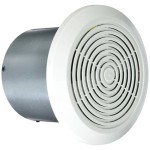How to Replace a Faucet in Your Bathroom
Replacing a bathroom faucet may seem like a daunting task, but it's actually a relatively simple project that can be completed in a few hours with the right tools and materials. Here's a step-by-step guide to help you navigate the process:
Tools and Materials Required:
- New faucet
- Adjustable wrench
- Plumber's putty
- Teflon tape
- Screwdriver
- Bucket
- Work gloves (optional)
Step 1: Prepare Your Workspace
Start by turning off the water supply to the faucet. Locate the shut-off valves under the sink and turn them clockwise until the water flow stops. Place a bucket under the faucet to catch any residual water that may drip out.
Step 2: Remove the Old Faucet
Disconnect the water supply hoses from the faucet by turning the nuts on the hoses counterclockwise with an adjustable wrench. Loosen the nuts holding the faucet to the sink and carefully lift the faucet out of the sink.
Step 3: Install the New Faucet Base
Apply a bead of plumber's putty around the perimeter of the new faucet base and place it in the sink opening. Secure it with the mounting nuts and tighten them by hand as much as possible.
Step 4: Connect the Water Supply Hoses
Wrap a few layers of Teflon tape around the threads of the water supply hoses and connect them to the corresponding valves in the faucet base. Tighten the connection with an adjustable wrench.
Step 5: Install the Handles
Place the handles on the faucet stems and secure them with the provided screws or bolts. Ensure the handles are securely fastened and properly aligned.
Step 6: Adjust the Temperature Limit
Most faucets have a temperature limit stop that prevents excessively hot water from flowing out. Locate the stop under the handle and adjust it to the desired maximum temperature setting.
Step 7: Test the Faucet
Turn on the water supply valves and allow water to flow through the faucet. Check for any leaks around the base, handles, or connections. If there are leaks, tighten the connections further or add more plumber's putty as needed.
Tips:
Before working on the faucet, take pictures or sketch the connections for easy reference during reassembly. If the faucet has aerators, remove them and clean them thoroughly before reinstalling.
Conclusion:
Replacing a bathroom faucet is a fairly straightforward project that can save you the cost of hiring a professional plumber. By following these steps and utilizing the tips provided, you can complete the task efficiently and enjoy the satisfaction of a refreshed bathroom.

How To Replace A Bathroom Faucet Removal And Installation

How To Replace A Bathroom Faucet Removal And Installation

Diy How To Replace A Bathroom Sink Faucet Remove Install

How To Replace A Bathroom Faucet Home Repair Tutor

How To Install A Bathroom Faucet The Home

How To Replace A Bathroom Faucet Tinged Blue

How To Fix A Bathroom Faucet 14 Steps

How To Replace A Bathroom Faucet The Home

How To Replace A Bathroom Faucet Home Repair Tutor

Diy How To Replace And Install A Bathroom Sink Faucet







